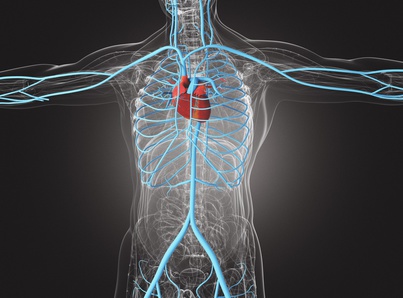Peripheral artery disease hinders patient quality of life extensively. In advanced stages, such as critical lower limbs ischemia (CLLI), it could yield an increased risk in major cardiovascular events, as well as limb-related events (amputation or repeat revascularization), making treatment with revascularization paramount in these cases.

Calcification is a predictor of revascularization failure, which is why technologies related to its treatment have been developed over the years. While there is still no evidence of a decrease in hard clinical outcomes with strategies such as atherectomy, its use allows for vessel preparation as well as the implementation of balloons (plain or drug-eluting) or stent implantation.
In the United States (US) there has been an increased demand for atherectomy devices, both for inpatients and outpatients (especially), so having data on the safety of their use is essential.
Krawisz et al. conducted a study with the aim of evaluating the long-term safety and effectiveness of atherectomy in peripheral vascular interventions in femoropopliteal disease.
The study included patients with femoropopliteal disease, older than 66 years old, from a contemporary cohort (2015-2018) who were enrolled in Medicare. The primary endpoint (PEP) was the presence of major adverse limb-related events (MALE) and a composite of all-cause mortality and amputation.
Read also: Long-Term Mortality in Non-Obstructive Lesions in the Left Main Coronary Artery.
The cohort included 168,553 patients, with some type of atherectomy used in 35.1% of cases (n = 59,142). Mean age was 77 ± 7.6 years; 44.9% of patients were female, 46.7% of patients had CLLI, 7.9% had undergone a previous amputation, and 49% were active smokers.
The mean follow-up was 993 days. In the unadjusted analysis, atherectomy was associated with lower risk of MALE (hazard ratio [HR]: 0.89, 95% confidence interval [CI]: 0.86-0.92; p ≤ 0.01), and lower risk for the composite of mortality and amputation (HR: 0.88; 95% CI: 0.87-0.90; p < 0.01). When adjusting for variables, there were no significant differences in the use of atherectomy with respect to events. In turn, there was a lower risk of amputation (adjusted HR: 0.94, 95% CI: 0.91-0.97; p < 0.01) and surgical revascularization (adjusted HR: 0.89; 95% CI: 0.86-0.92; p < 0.01).
Conclusions
In this analysis of US Medicare beneficiaries who underwent atherectomy for femoropopliteal disease, peripheral revascularization with this plaque modification technique did not present an increased risk of mortality or adverse events in the affected limb. This study has the limitations of being a retrospective analysis; therefore, conducting randomized studies in these patients is essential.

Dr. Omar Tupayachi.
Member of the Editorial Board of SOLACI.org.
Original Title: Long-term outcomes of peripheral atherectomy for femoropopliteal endovascular interventions.
Reference: Krawisz, Anna K et al. “Long-term outcomes of peripheral atherectomy for femoropopliteal endovascular interventions.” EuroIntervention : journal of EuroPCR in collaboration with the Working Group on Interventional Cardiology of the European Society of Cardiology, EIJ-D-22-00609. 14 Nov. 2022, doi:10.4244/EIJ-D-22-00609.
Subscribe to our weekly newsletter
Get the latest scientific articles on interventional cardiology





